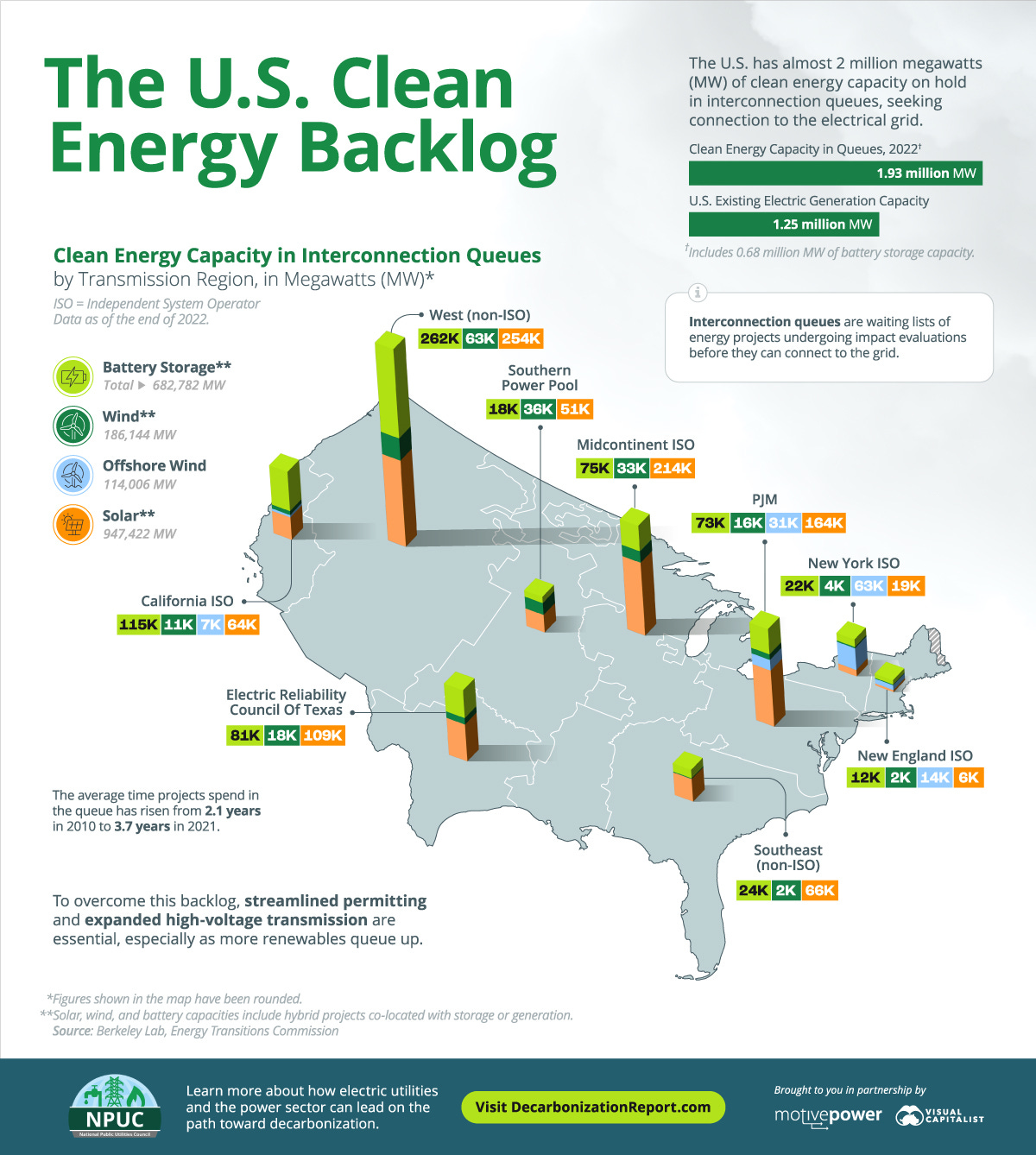Lessons from Tupperware Bring Climate Messaging to the Mainstream
Grassroot marketer Brownie Wise would be called a community manager today. In the 1950s, she sold one of history’s most popular petroleum products by getting outside the bubble.
Who would ever have imagined that one of history’s most ubiquitous and popular petroleum products would provide a template for meeting people where they’re at and bringing climate messaging from the margins to the mainstream?
And what can a massive grassroot marketing campaign in the 1950s teach us about listening and connecting, at a moment when immediate pocketbook concerns are drawing attention and political leverage away from voters’ widespread worries about climate change?
Those questions bring us to the story of Brownie Wise, the grassroot marketer who took a product that was languishing on store shelves and made Tupperware a household name, for better and for worse. Her Wikipedia profile describes her as a “pioneering American saleswoman” who dropped out of high school and was delivering speeches at union rallies by age 14. Decades later, she spent seven years as vice president of Tupperware Home Products until she was fired by the company’s founder, Earl Tupper.
But filmmaker Laurie Kahn had a more vivid take on what made Wise so effective at reaching around and under conventional messaging while changing the lives of 1950s women who had few other options for jobs or incomes.
“Instead of having a man, for example, with a suitcase full of product knocking cold on doors, home parties relied on women inviting their neighbours, their family, their friends, people from church, whatever, into their living rooms,” Kahn told CBC’s Day 6 program earlier this year. “And then somebody would demonstrate the product, and then they would play games. They had fun. And then at the end, they would take orders from the guests.”
Programming note: You’ve probably been reading that tech giants Google and Facebook/Meta are blocking Canadian media from their news platforms. That makes email subscriptions to The Energy Mix and the Energy Mix Weekender your best antidote to make sure you always get the climate news you need. Subscribe today and never miss another edition!
A 1950s Community Manager
If Brownie Wise were alive today, she’d be an ace with online platforms and we might call her a community manager or an audience developer. By creating a format to which husbands of that era couldn’t easily object—after all, it was just a party where friends gathered to play games—"Brownie completely transformed the lives of tens of thousands of working class women and provided this really fun thing that they could do that was under their control,” Kahn said.
By understanding her community and working from the ground up—by designing Tupperware parties around the needs of the rural and suburban, divorced and married, abled and disabled women from multiple different racial and religious backgrounds who hosted them—Wise built a sales network so powerful that it made her the first woman ever featured on the cover of Businessweek.
She also pioneered an annual Tupperware jubilee, a sales training event that gave participants the sense of being part of a bigger team. “It was also a chance to reward her sales force, and it was really powerful for women who didn't get applauded very much in their lives,” Kahn said.
Wise was pitching a product that is increasingly seen as landfill fodder today. But her grassroot methods came to mind this week when the Leger public opinion poll reported on the vanishingly small percentage of participants in a recent online survey who cited climate change as their top priority—even though nearly three-quarters said they were concerned about it.
“Leger reported that 72% of Canadians surveyed said they are worried or very worried about climate change,” The Canadian Press wrote. But “pocketbook issues heavily outweighed climate change as a top-of-mind issue,” with “only 7% of those surveyed listing climate change as the top issue facing the country.”
Changing the Channel
To some extent, the Leger results showed that the answers you get depend on the polling questions you ask.
“Asking people to say how much they would pay individually employs a strategic frame that causes respondents to think of themselves in isolation, individually on the hook, and perhaps defensive,” said James Boothroyd, managing director of Vancouver-based EcoAnalytics Research. But survey respondents “will support transitioning to renewables when framed as a public investment that is fair, that all contribute to.”
So if setting the frame makes such a big difference in the way we ask a question, certainly it should shift the way we present ideas and answers. That means connecting a summer of record heat, devastating wildfires, and killer storms and floods to the pocketbook issues that are also keeping people up at night. Changing the channel can make all the difference in the way Canadians outside the “bubble” of active climate concern engage with the problem and its solutions, just as it did in a very different context when Brownie Wise turned Tupperware into a marketing juggernaut.
This isn’t an argument for shutting down the necessary, harder-edged messages that we’ve been seeing as this weekend’s climate strike spreads across the globe—but we do need something more.
Opening up a big suitcase of consumer products or energy transition arguments will draw in some audiences, and if that latter group of active, angry citizens were big and influential enough to deliver faster, deeper carbon cuts, the cuts would already be happening. Getting beside that next tier of support—connecting climate impacts with the affordability crisis, and climate solutions with jobs, health, safety, and stability—is where we find wider common ground without triggering kneejerk ideologies and automatic opposition.
Listening from the Ground Up
From Laurie Kahn’s interview on CBC, we learned that Tupperware is made of polyethylene, a petroleum-based plastic originally created as a coating for underwater cables serving the U.S. military during the Second World War. Where Brownie Wise was pitching a plastic product, a more recent online listening project discovered that day-to-day isolation and mountains of waste (much of it, no doubt, plastic waste) were the connecting points for a group of 35,000 suburban and rural women, most of them in Alberta and Ontario, most of them mothers of young children.
Rather than pitching participants on the climate emergency—or challenging them on what it would take for them to “wake up”—the project led by Delyse Sylvester, founder and principal of British Columbia-based Social Currents, settled in to listen. It turned out there was a lot to listen to.
“The centre of the stories was consistently about how to break mothers’ sense of isolation,” Sylvester recalled, in a feature interview that we originally published last year. “Climate mitigation information and activities were only of interest if they could show that they assisted mothers in building relationships that could help them overcome that isolation.”
And the messenger was just as important as the message. “Only mothers who shared the same experience of a deep sense of isolation, feelings of being judged, and exhaustion, were the trusted peers who were influential in engaging mothers,” she said. “There was much less response if the mothers we interviewed identified as climate professionals. They had to be of the audience.”
Connecting the Dots
There was one topic that brought climate concern closer to the centre of the conversation.
“The big entry point was waste, because mothers have to manage so much of it in their households. It’s a big, isolating activity that just gets mothers feeling depressed,” Sylvester said.
“So it started with peer influencers creating ‘mother huddles’ to get the waste out of their homes, neighbourhoods, and parks. Over time, mothers began to make connections to landfills, pollution, and eventually to the carbon conversation. And a small number of peer influencers we interviewed started organizing to lobby their municipal decision-makers for policy change.”
Much of the activity depended on women who had earned the group’s respect and trust as community leaders.
“Their messages weren’t ‘well, here is what you must do to save the planet’,” Sylvester said. “It was ‘do you want to go on a walk together to deal with this trash so our kids are safe?’. Or ‘want to make friendships by swapping clothes and toys?’. Or ‘want to buy a beautiful, repurposed item?’. And then—‘let me tell you a little about the value-add of how we are caring for our planet by keeping more carbon out of the air’.”
The generational shift from the 1950s to the 2010s is that, while Brownie Wise was pitching the product, the women in Delyse Sylvester’s “mother huddles” were dealing with the culture of waste that Tupperware helped create. But there’s still a lot to learn from two vastly different efforts that brought people together to connect, have fun, and help each other solve a day-to-day problem.
Not to mention a strategy that delivers solid results.
“If we understand this trajectory and honour it, we can also focus climate communications on empowering trusted influencers to make the direct link to pollution and carbon and the ballot box,” Sylvester told The Energy Mix. “We can be of the community rather than broadcasting messages at the community.”
Mitchell Beer traces his background in renewable energy and energy efficiency back to 1977, in climate change to 1997. Now he and the rest of the Energy Mix team scan 1,200 news headlines a week to pull together The Energy Mix, The Energy Mix Weekender, and our newest weekly e-digest, Cities & Communities.
You can also bookmark our website for the latest news throughout the week.
Chart of the Week

‘I’ve Been Ghosted,’ Rural Mayor Says, as Alberta Towns Push Back on Renewables Moratorium
CCS Can’t Compete with Renewables, Won’t Deliver by 2030, Report Finds
Poilievre Could Dial Back Canada’s Climate Gains, Globe Editorial Warns
False Advertising Complaint Challenges Enbridge’s Claim of ‘Cheap’ Natural Gas
Montreal Adds Nine More Car-Free Streets after ‘Mind Blowing’ Success
Wildfire ‘Tipping Point’ Set to Double or Triple Canada’s Climate Emissions
Geothermal Companies Seek Limitless Energy With Oil and Gas Drilling Technologies
Colorado Governor Aligns Housing with State Climate Goals
Heat Pumps Cut Costs, Decarbonize Buildings, Even on Coldest Days
Banks spending trillions to finance causes of climate crisis in Global South (Corporate Knights)
SFU’s Mark Jaccard Appointed Chair, CEO of BC Utilities Commission (B.C. Government)
Why producing a barrel of oil causes higher emissions in Saskatchewan compared to Alberta (Canadian Broadcasting Corporation)
Ice cores reveal Antarctica is warming twice as fast as global average (Carbon Brief)
Inundation and Injustice: Flooding Presents a Formidable Threat to the Great Lakes Region (Inside Climate News)
Seesawing gas market dominated by fear and volatility (Institute for Energy Economics and Financial Analysis)
Japan plans to co-operate with Canada on storage battery supply chains (Reuters)
New invention could herald ‘battery revolution’, scientists say (The Independent)
The world’s largest low-carbon steel plant moves closer to completion (Canary Media)
More than a fifth of UK shoppers’ favourite grocery items at climate breakdown risk (The Guardian)
A gamer’s quest to prepare kids for climate change (Yale Climate Connections)
In ‘brutal’ U.S. Open heat, Daniil Medvedev warns during his win that a player is ‘gonna die’ (The Associated Press)








"Opening up a big suitcase of consumer products or energy transition arguments will draw in some audiences, and if that latter group of active, angry citizens were big and influential enough to deliver faster, deeper carbon cuts, the cuts would already be happening. Getting beside that next tier of support—connecting climate impacts with the affordability crisis, and climate solutions with jobs, health, safety, and stability—is where we find wider common ground without triggering kneejerk ideologies and automatic opposition." More than a year later and this is as relevant as ever!
Great article,Mitchell! These stories of real people and “movements” tell us something about the (necessary?) support of relationships and how—with group support—people learn and grow confidence to act.